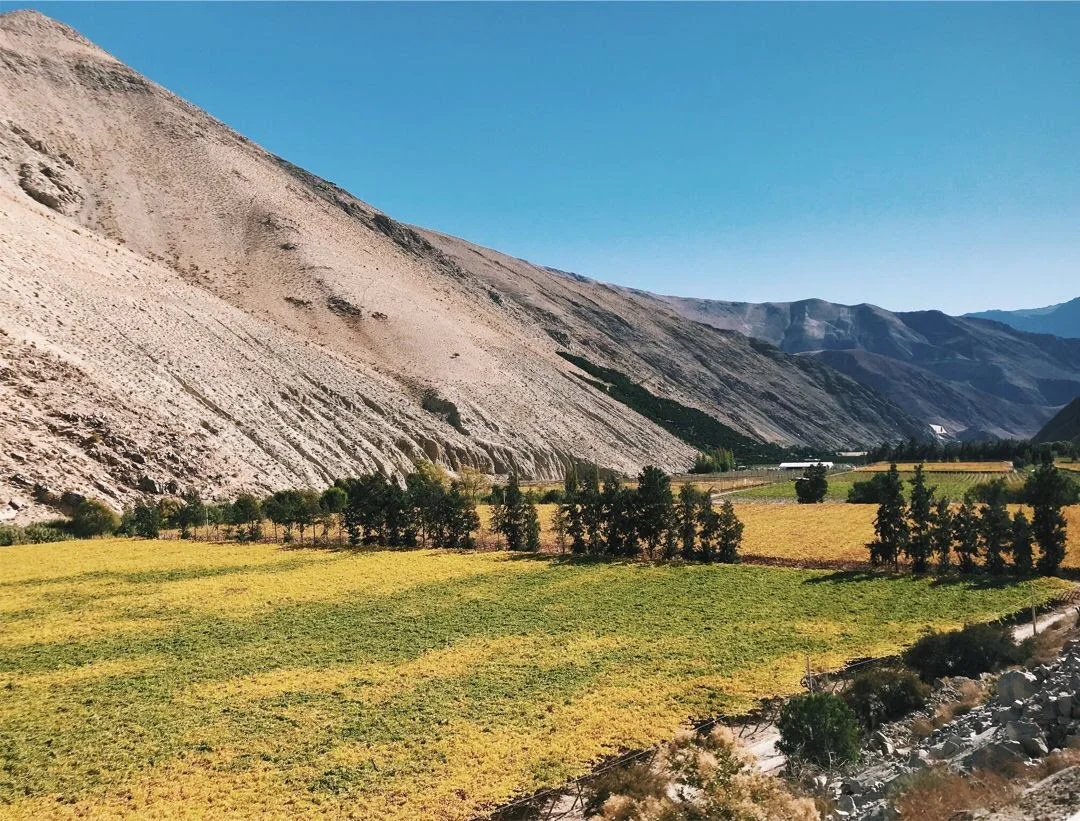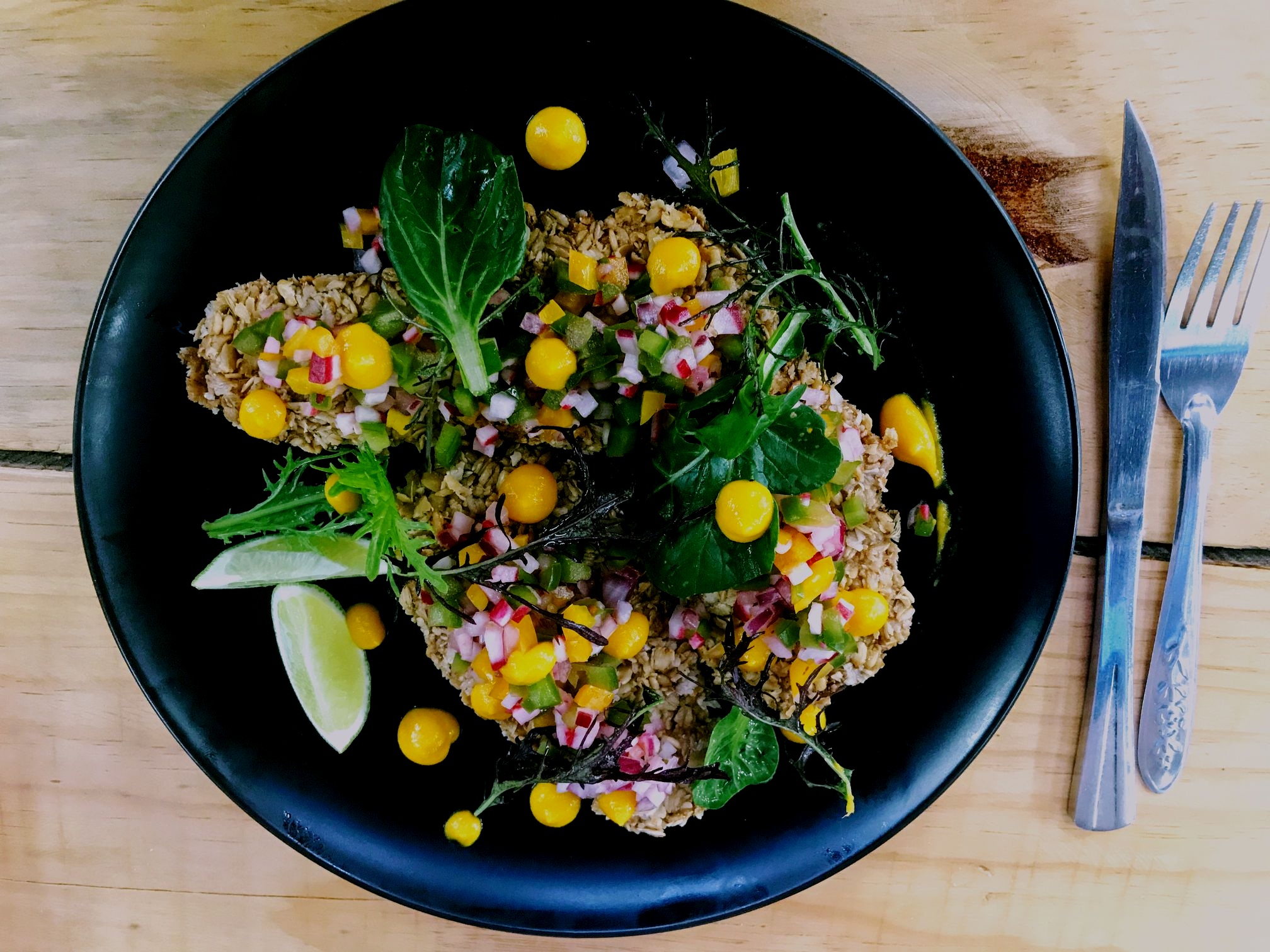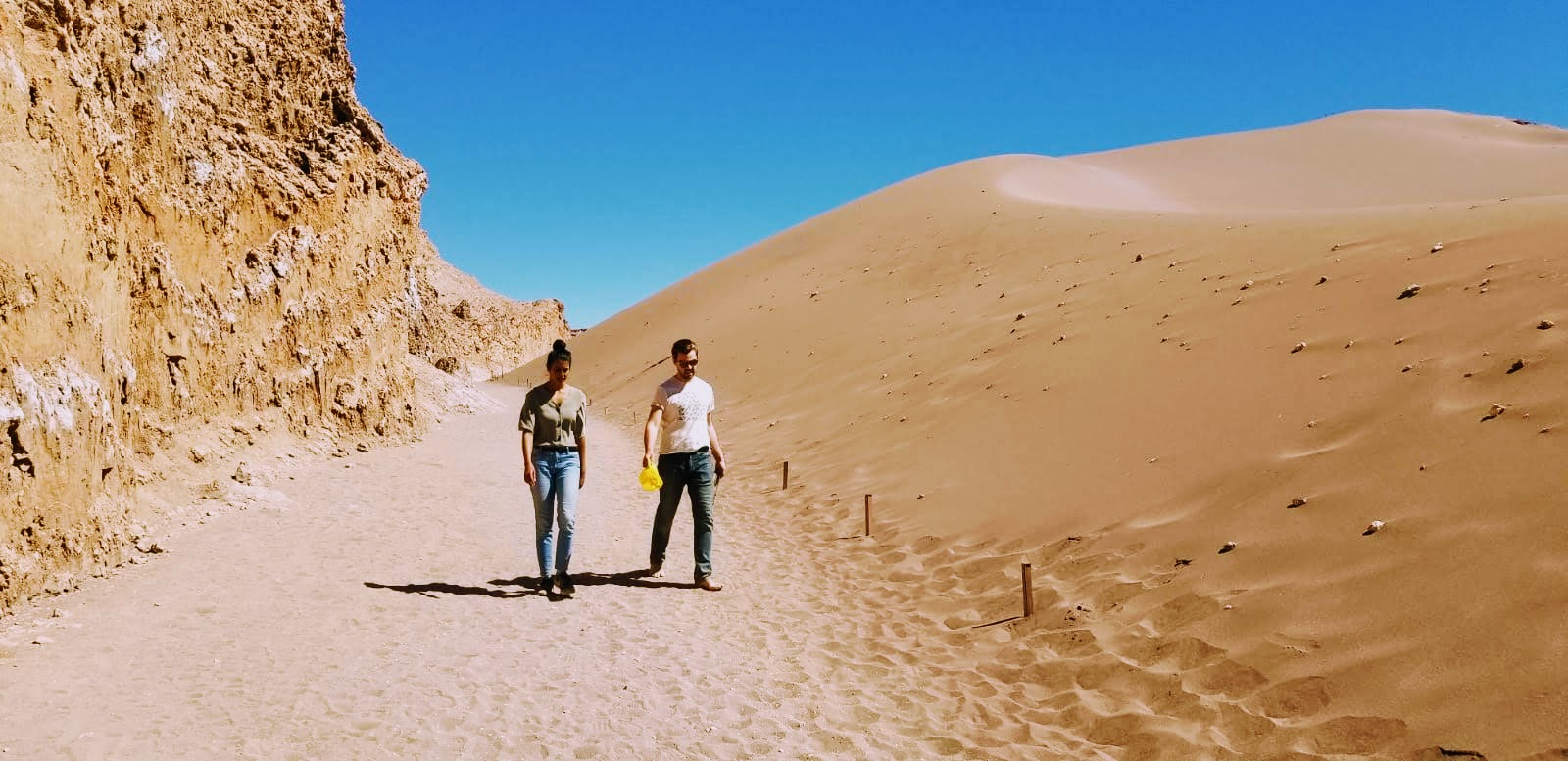La Serena and Pisco Elqui

When I found cheap airfare to La Serena, a coastal city 1.5 hours north of Santiago, I jumped at the chance to visit. It’s a popular summer destination given its 14 km of coastline, but we got $40 tickets, so off we went in Chilean winter.
WHAT IS LA SERENA KNOWN FOR?
I did a lot of research before going on this trip, mostly trying to figure out ways we could avoid taking a tour.
La Serena is a cute little town known for a few big things:
Proximity to the Elqui Valley, where they make Chile’s famous pisco liquor
Day trips to Isla Damas, their famous penguin reserve
Clear skies, perfect for stargazing
Since we had 4 days in this region, we managed to experience all this and more. I’ll probably have to write a blog post on each place, but for now, I'll leave you with the highlights.
PISCO ELQUI (aka VALLE DEL ELQUI)
The heart of Chile’s pisco production is in a mountainous region carpeted with vast swaths of lush green vines. We visited one of the largest distilleries in the region, Pisco Mistral, located right in the town of Pisco Elqui (a 2 hour bus ride from La Serena). The tour was in Spanish, so we retained about 5% of what we heard.
From what I can tell, the pisco making process is about the same as wine, with the additional step of distillation (like you would with whiskey). While Pisco Mistral probably one of the biggest industrial pisco producers, their destileria is incredibly scenic, and a dream for taking photos (probably contributed to why I retained such little information on our tour).
We also walked about 20 minutes to an “artisanal” Pisco distillery with a much smaller pisco production, and run by a very odd man who made sure we knew how much he hated the Chilean pension system (called AFP). While the grounds were beautiful (see photo below), I was much more impressed by the stunning views of the pisco valley, and the colorful homes at every turn.
Thank you so much, stranger, for capturing a flag pole coming out of my head. This is exactly what I wanted.
ISLA DAMAS and RESERVA PINGUINO HUMBOLDT
The next day, we visited two protected national reserves - Isla Damas and Reserva Pinguino Humboldt in Isla Choros. I’ve been to a few reserves (like the Huilo Huilo Reserve), but I have never experienced such dedication to protecting local wildlife as I did here.
The boat tour lasted three hours - we circled around two islands, and were only allowed to step foot on one. The first island was home to the beautiful Humboldt penguins. Unfortunately, it was mating season for our penguin friends, so we were only able to spot a couple.
We did, however, maneuver around amazing coves created millions of years ago, now home to all kinds of sea life. That’s how we were treated to a rare sighting of sea otters playing in the water. They look like adorable little sea rats!
The highlight of this trip had to be our dolphin experience. As we were heading to our next destination, we got word that another boat had seen dolphin nose lurking out of the water. Within seconds, there was a flurry of phones whipped out waiting for the dolphins to make an appearance.
AND THEY DID!!
The next island was immaculate - white sand, clear blue water - it looked like we were in the middle of the Caribbean. When we stepped off the boat, we were met with CONAF rangers (Chile’s version of park rangers), who told us about the three trails we were allowed to walk on, and that we were NEVER allowed to step off trail so as not to disturb the local residents.
We weren’t even allowed to touch the water!
We explored the island for about an hour before making our way back to the boat and heading to civilization.
I’m not sure anything could top our day today.
But then...
STAR GAZING IN VICUNA
Have you ever seen the Milky Way?
The next night, we relocated to the neighboring town of Vicuna, which is the jumping off point for observatory tours in the area. We chose the Pangue Observatory (and were assured by several people that it was the best one) for a night tour of the stars in the area.
While our stay in Pucon also had some jaw dropping stargazing views, Chile’s northern region supersedes it in many ways. The lack of humidity in this part of the country creates pristine conditions to get up close with the celestial world.
While I tried my hardest to capture some shots of the Milky Way, my photography skills aren’t quite yet up to par. So, I’ll leave you with my favorite moments with photos taken off NASA & Google:
We saw the rings of Saturn & Jupiter's moons!
And many, many shooting stars.
I’ll be back
Even during the off-season, La Serena felt like a place that had a charm to it. I’m now more curious than ever what it would be like to visit when it’s brimming with tourists during peak summer season.
Jet Smart, you better have some sales for me come December.

























